Exploring ancient ruins and castles in the UK
Penned on the 16th April 2025
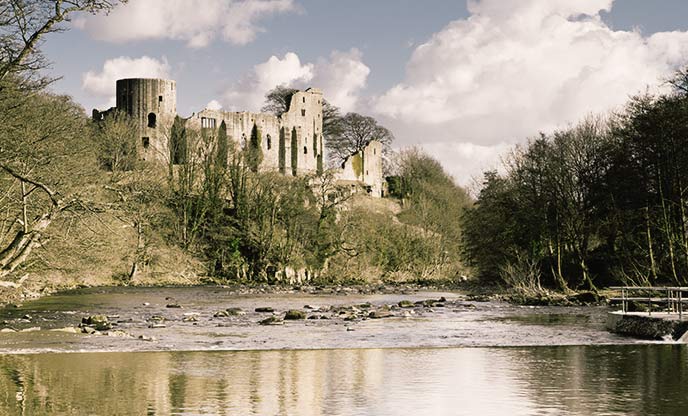
Part of the beauty of the UK’s historic landscapes is their ability to transport you back in time. Amidst the tranquil woodlands, patchworks of farmland, oceanic vistas, and market towns are hidden signs of the country’s ancient past. From the towering pillars of Stonehenge to the thousands of castles that cover its emerald landscapes, you’re never far from uncovering secrets of the past.
The UK’s ancient history
The story of human life in the UK stretches back 800,000 years, and the traces left behind are nothing short of magical. From ancient tools to mysterious stone circles, the echoes of our ancestors whisper across the landscape. By 4,000 BC, as agriculture began to take root, humans transformed the land, building settlements which can still be found today.
But it’s not just these early communities that captivate the imagination. The UK is a treasure trove of ancient wonders – majestic castles, weathered stone walls, and awe-inspiring prehistoric monuments. Picture misty mornings at a Neolithic stone circle, exploring the timeless ruins of monasteries, or standing atop a Bronze Age burial mound with views that stretch forever.
These sites don’t just tell stories – they transport you to another time, stirring a sense of wonder and curiosity. Whether you’re planning a staycation or dreaming of exploring the UK, these magical places promise unforgettable adventures steeped in mystery and history.
Must-visit ancient ruins and castles in the UK
With over 20,000 scheduled monuments and countless historic sites across the UK, here are some of the best to visit to gain insight into the country’s ancient history.
Tintagel Castle, Cornwall
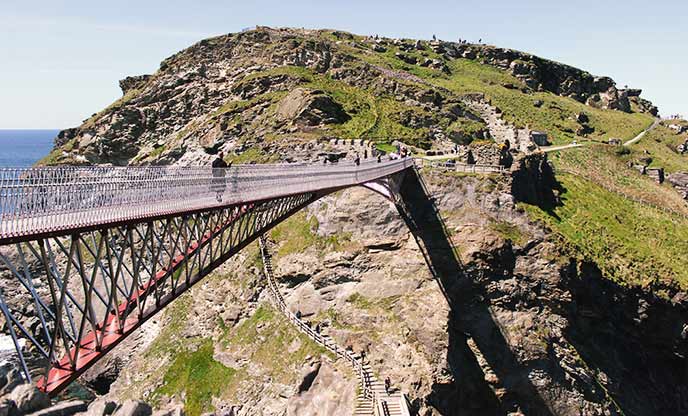
Famously immortalised as the birthplace of King Arthur, Tintagel Castle is amongst one of the UK’s most famous castles. Perched atop the cliffs of the north Cornish coastline since the 12th century, half of the ruins are on the mainland with the other half on a jagged headland. Connecting the two sections is an impressive bridge, with far-reaching views out to sea. A visit offers you the chance to learn more about the interplay between history and legend and to explore the stunning surrounding Cornish landscape.
Where to stay: Koes Cabin | Enveloped by woodland, this off-grid eco-escape includes a waterfall in an abandoned quarry.
Exeter Roman Wall and Gate, Devon

Exeter boasts one of the most complete and well-preserved circuits of defensive city walls in England. Over 70% of these Roman walls remain standing, with sections dating back over 2,000 years. Among the highlights is the West Gate, one of the city’s original four entrances. Recent archaeological discoveries include a Roman bathhouse and a legionary fortress, continuing to unveil the city’s Roman heritage and making Exeter a captivating destination for those intrigued by Roman history.
Where to stay: Shepherd’s Oak | Including a wood-fired hot tub and breathtaking views of the Devonshire countryside, this cosy hideaway is perfect for couples.
Pevensey Castle, Sussex
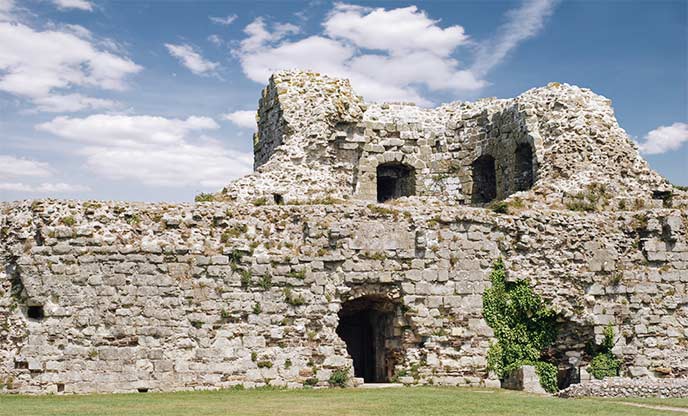
Pevensey Castle, established in the 4th century as one of the final Roman "Saxon Shore" forts, holds a unique place in history. It later became the landing site of William the Conqueror's army in 1066, marking the beginning of the Norman conquest. Remarkably, two-thirds of this ancient fortress still stands today, offering visitors a vivid glimpse into this crucial point in time and the chance to walk in the footsteps of those who shaped history.
Where to stay: Matilda | For an extra dose of history, this medieval inspired hideaway has vibrant bespoke interiors set amidst a meadow and surrounded by pretty woodland.
The Longstone, Isle of Wight
The Isle of Wight is home to over 240 Bronze Age burial mounds, known as round barrows, with the majority clustered along the chalk ridge that cuts through the heart of the island. Among its most remarkable ancient landmarks is the Longstone, a striking Neolithic monument dating back 6,000 years. Located just a mile from the Isle of Wight Coast Path, the Longstone offers the perfect opportunity to combine a visit to this fascinating piece of history with a scenic walk around the island’s breathtaking landscapes.
Where to stay: Sunrise and Stars | A dog-friendly shepherd's hut with a hot tub, this idyllic hideaway is set amidst rolling farmland.
Cerne Abbas Giant, Dorset
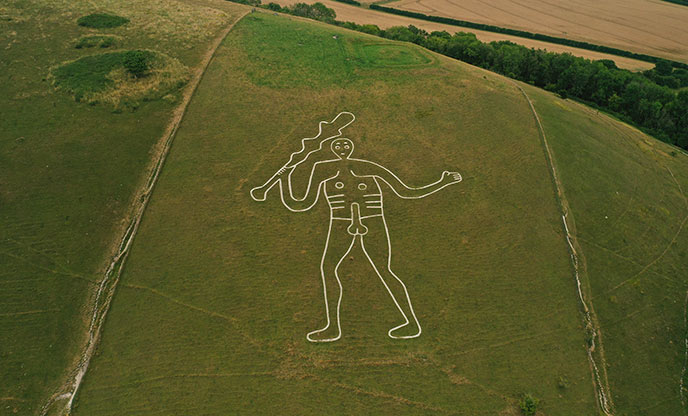
Whilst not technically a castle or ruin, the Cerne Abbas Giant is Dorset’s most famous ancient site. Visible from many miles away, this carving of a naked figure into the chalk hillside is steeped in mystery and legend. Some claim the giant represents the Roman God Hercules, whilst others believe it to be a pagan fertility symbol. Whatever its purpose, this eye-catching figure continues to captivate and inspire visitors. Though best viewed from the nearby car park, a climb up Giant’s Hill offers breathtaking views of the surrounding valley.
Where to stay: La Cabine Francaise | A romantic, dog-friendly cabin with a French-inspired twist. Perfect for those looking to enjoy an idyllic nature-filled escape.
The Hurlers, Cornwall
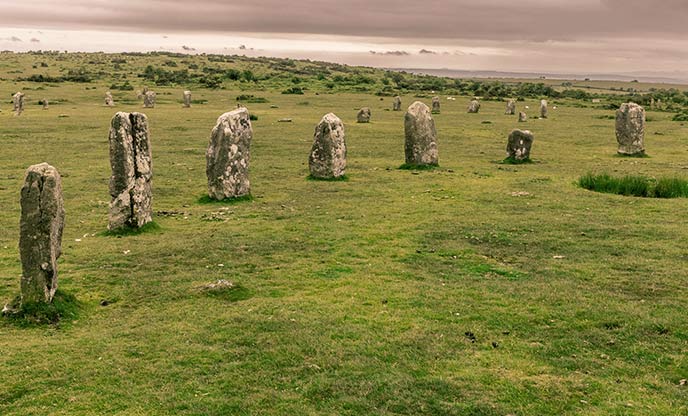
Set amidst the beautiful Bodmin Moors, famous for their wild landscapes and plentiful wildlife, the Hurlers are amongst the best examples of ceremonial circles in the south west. Comprising three stone circles dating back to the Bronze Age, they are estimated to be around 4,000 years old. Likely used for pagan rituals and ceremonies, local legend also claims they are men who were turned to stone for playing hurling on a Sunday.
Where to stay: The Enchanted Wardrobe at Warleggan | Nestled within 12 acres of serene countryside, this charming shepherd’s hut offers breathtaking views of lush green fields, babbling moorland streams, and woodlands.
Barnard Castle, Yorkshire

Perched dramatically on a high rock above the River Tees, Barnard Castle takes its name from its 12th-century founder, Bernard de Balliol. This medieval fortress was later enhanced by the Beauchamp family, before becoming a possession of Richard III. Wander through its towering ruins, soak in stunning riverside views, and imagine the lives of those who once called it home. For an added touch of history, venture just one mile away to Egglestone Abbey, a serene and atmospheric ruin of a 12th-century Premonstratensian monastery, nestled amidst picturesque woodland.
Where to stay: Sammi’s Freight Train | This unique escape, crafted from an upcycled railway carriage, boasts panoramic views of the Yorkshire countryside and is nestled on the edge of a working farm.
Hadrian’s Wall, Northumberland
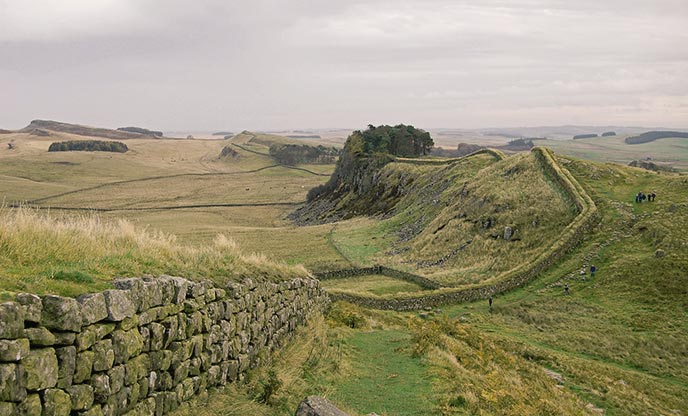
Hadrian’s Wall, the most iconic frontier of the Roman Empire, has stood as a testament to ancient engineering for nearly 2,000 years. Constructed to safeguard the north-western edge of Roman Britannia, it served as a formidable barrier against northern tribes for centuries. Once spanning an impressive 80 miles from coast to coast, significant portions of this historic wall remain intact today. Visitors can explore these ancient paths, immersing themselves in the legacy of Roman Britain and walking in the footsteps of our ancestors.
Where to stay: The Wren’s Nest | Perfectly positioned between Hadrian’s Wall and the Lake District National Park, this remote cabin is the ideal launchpad for an unforgettable nature-filled escape.
St David’s Bishop's Palace, Pembrokeshire

Once a center of pilgrimage for the medieval western world, St David’s – the UK’s smallest city – remains a place of awe and wonder today. The atmospheric ruins of the Bishop’s Palace showcase breathtaking Gothic architecture, with intricately carved stone archways, elegant staircases, and an undeniable sense of grandeur. Surrounded by lush greenery and the serene Pembrokeshire coastline, the palace blends history with nature in perfect harmony. In summer, the courtyard transforms into a magical stage for open-air theatrical performances.
Where to stay: Station A | A former WWII research laboratory station with panoramic sea views, this family friendly hideaway also has plenty of nature-filled walks right on your doorstep.
Conwy Castle, Wales
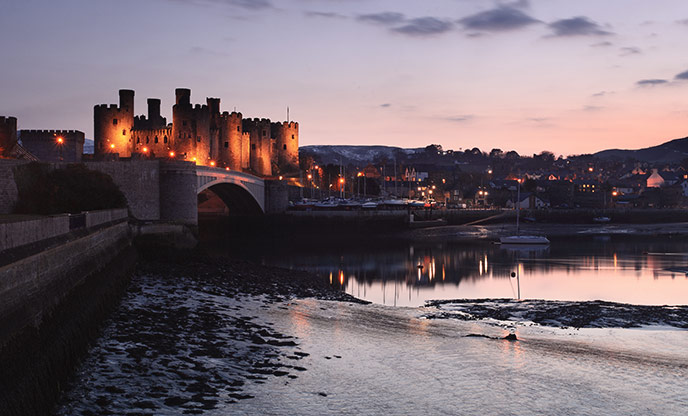
This magnificent medieval fortress has been standing proud for over 700 years. Originally built by King Edward I in the 13th century, today it is a UNESCO World Heritage Site. Nestled against the stunning backdrop of the Snowdonia mountains, the castle commands views over Conwy’s charming narrow streets, which are still encircled by their original, well-preserved town walls. Together, the castle, town, and landscape create a breathtaking scene that feels like stepping into a storybook.
Where to stay: Celt | Perched above the Irish Sea, this secluded shepherd’s hut offers the ultimate sunset vantage point. Plus a wood-fired hot tub and a cosy fire pit.
Unique Hideaways in the UK
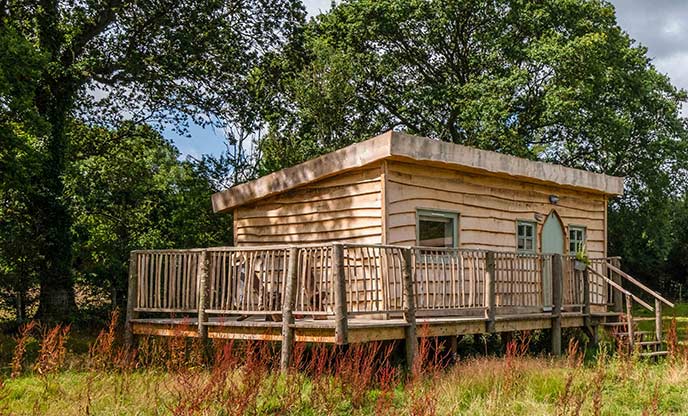
Whether you’re drawn to serene landscapes dotted with ancient Bronze Age burial mounds, enchanted by the mystery of pagan stone circles, or eager to uncover history within one of the UK’s awe-inspiring castles, why not make your adventure truly unforgettable with a stay in one of our unique hideaways? From charming tiny houses and eco-lodges to cosy seaside gems, our carefully curated collection offers the perfect base for exploring the UK’s ancient past while immersing yourself in nature and tranquility.